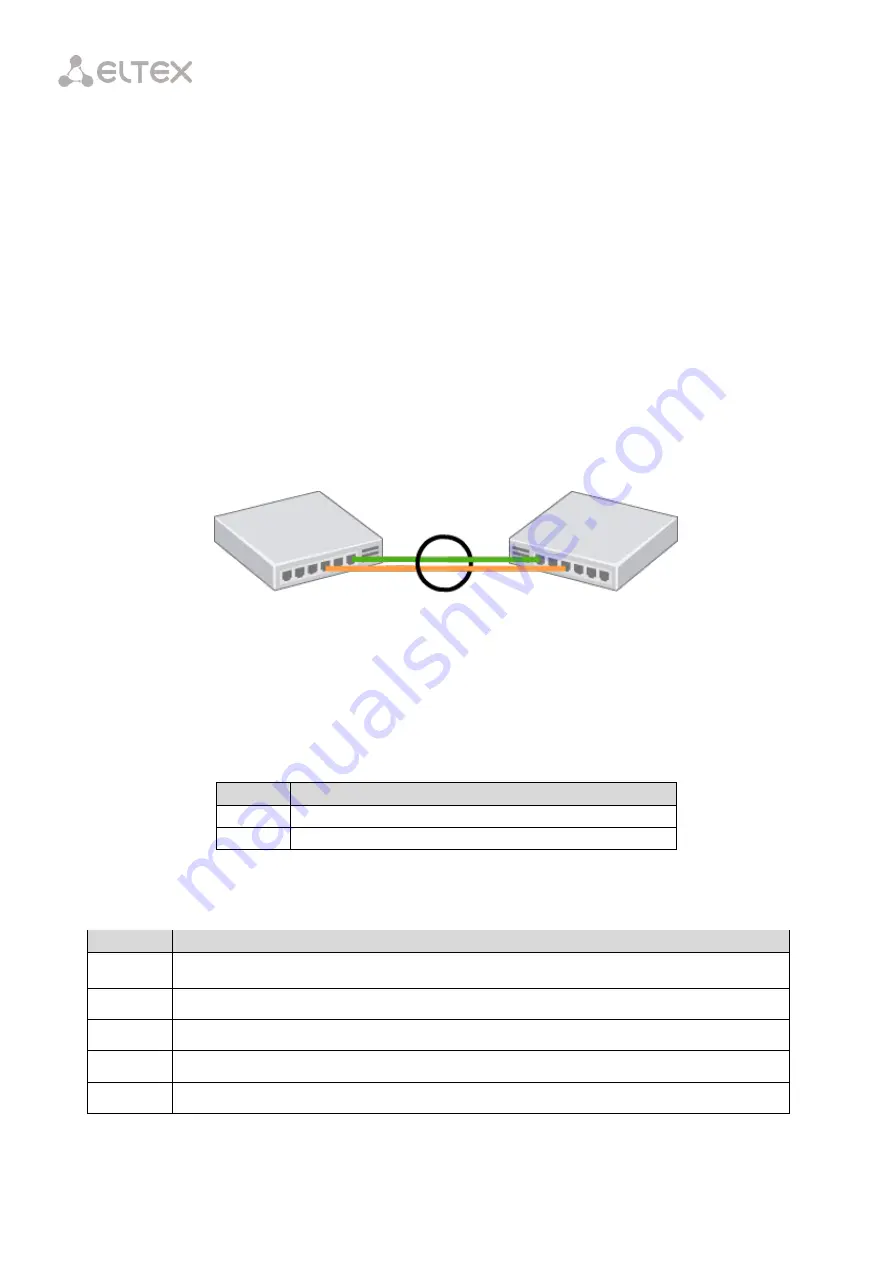
83
Chapter 21.
LAG Configuration
Introduction
This chapter describes configuration of uplink interfaces aggregation. Link aggregation (IEEE 802.3ad) is a
technology that allows multiple physical links to be combined into one logical link (aggregation group).
Aggregation group has a higher throughput and is very reliable.
Fig. 21.1 – Multiple Physical Links Combined to an Aggregation Group
The terminal supports two interface aggregation modes: static and dynamic. Static aggregation implies
that all communication links of a group are always active. As for dynamic aggregation, link activity is
dynamically determined during operation via LACP protocol.
Table 21.1 – Operation Modes of Aggregation Groups
Mode
Description
static
Link aggregation protocol is not used
lacp
LACP is used
The terminal has several algorithms of load balancing within aggregation groups.
Table 21.2 – Load Balancing Modes
Mode
Description
ip
Based on IP addresses of sender and receiver
ip-l4
Based on IP addresses of sender and receiver, and L4
mac
Based on MAC addresses of sender and receiver
mac-ip
Based on MAC and IP addresses of sender and receiver
mac-ip-l4
Based on MAC and IP addresses and L4 of sender and receiver
Summary of Contents for LTP-4X
Page 11: ...11 Part I General ...
Page 29: ...29 Part II Getting Started with the Terminal ...
Page 37: ...37 Part III Configuring the Terminal ...
Page 98: ...98 Part IV ONT Configuration ...
Page 174: ...174 Part V Terminal Monitoring ...
Page 189: ...189 Part VI Terminal Maintenance ...
Page 191: ...191 Step 2 Remove the module from the slot Fig 43 4 Removing SFP Transceivers ...















































